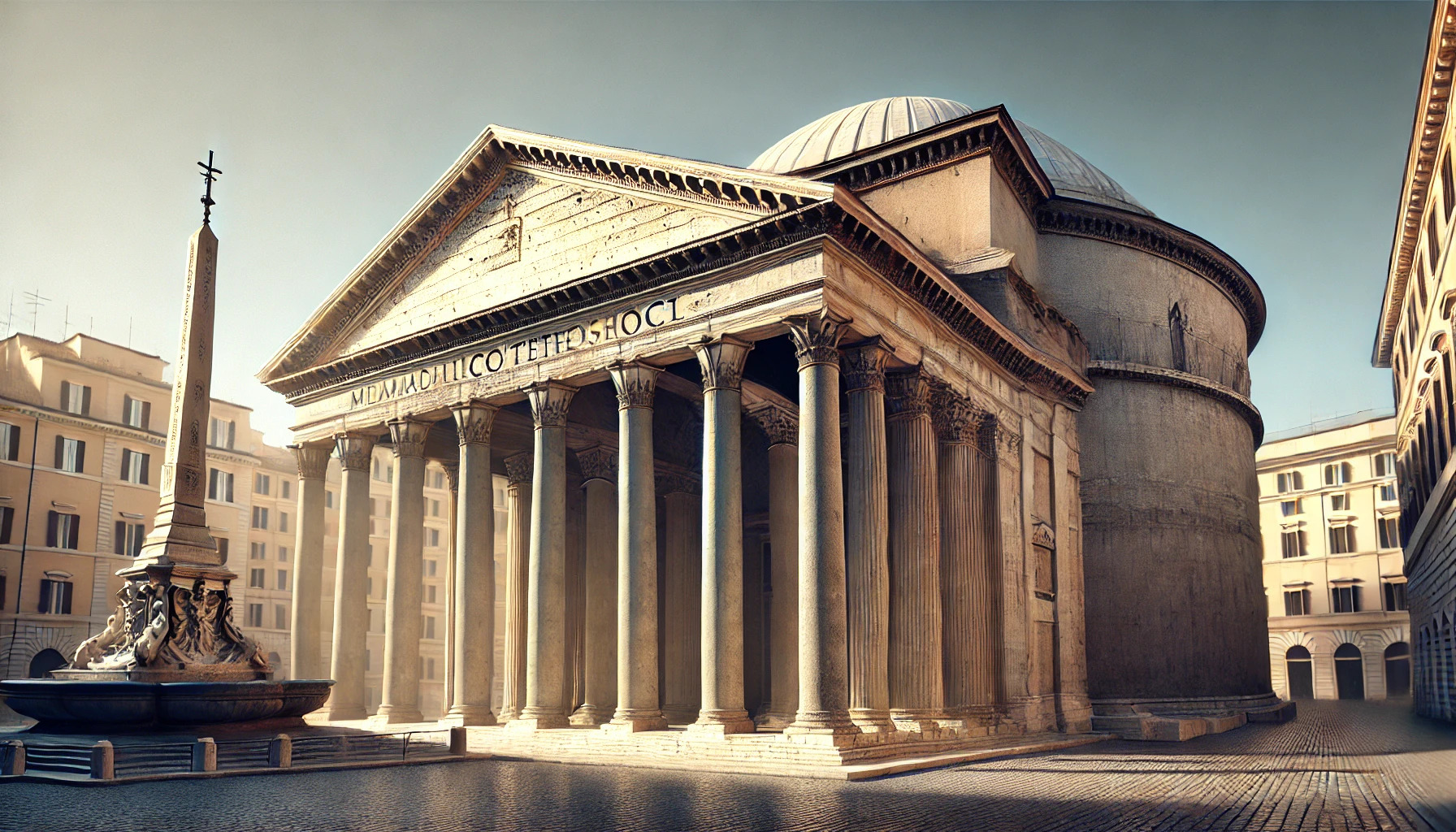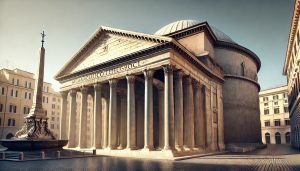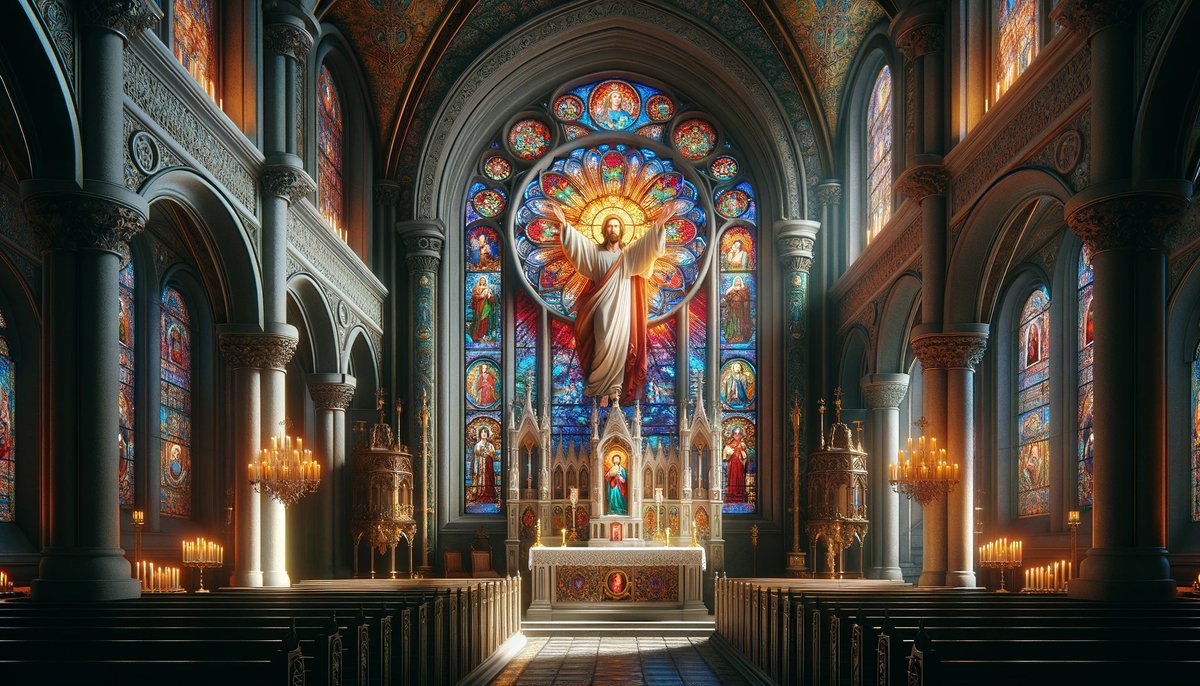Home>Christian Resources>The Spiritual Journey to Rome: A Christian Perspective on Visiting the Pantheon


Christian Resources
The Spiritual Journey to Rome: A Christian Perspective on Visiting the Pantheon
Published: July 26, 2024
Explore the Pantheon in Rome through a Christian lens, discovering its spiritual significance and majestic architecture.
(Many of the links in this article redirect to a specific reviewed product. Your purchase of these products through affiliate links helps to generate commission for Christian.net, at no extra cost. Learn more)
Table of Contents
Rome, the Eternal City, is a significant destination for Christians around the world. Steeped in history and religious significance, it offers a profound spiritual journey. Among the many historical and religious sites in Rome, the Pantheon stands out as a unique monument with deep Christian connections. This article explores why Christians should visit Rome and specifically the Pantheon, delving into the historical, spiritual, and cultural reasons that make this pilgrimage deeply meaningful.
Historical Significance of Rome for Christians
1. The Heart of Christianity
Rome is often regarded as the heart of Christianity. It is the seat of the Vatican, the spiritual and administrative center of the Roman Catholic Church, and home to St. Peter’s Basilica, one of the holiest sites in Christendom. According to tradition, St. Peter, one of Jesus’s apostles and the first Pope, was martyred in Rome. His tomb lies beneath the basilica, making it a pivotal pilgrimage site.
2. Early Christian History
Rome’s Christian history dates back to the early days of the faith. The city was a crucial hub for early Christians, many of whom faced persecution under Roman rule. Visiting Rome allows Christians to walk in the footsteps of these early martyrs and saints, gaining a deeper appreciation for their sacrifices and the growth of the faith. The catacombs, ancient underground burial sites, offer a sobering glimpse into the lives of these early Christians.
3. Pilgrimage Traditions
For centuries, Christians have embarked on pilgrimages to Rome. This tradition continues today, with millions of pilgrims visiting to deepen their faith, seek spiritual renewal, and connect with the roots of Christianity. The Jubilee Year, celebrated every 25 years, attracts even more pilgrims, offering special indulgences and spiritual benefits.
The Pantheon: A Unique Christian Landmark
Read more: How Can Christians Fight A Spiritual Attack
1. From Pagan Temple to Christian Church
The Pantheon, originally built as a temple for all Roman gods, was completed around 126 AD under Emperor Hadrian. Its name, derived from the Greek words “pan” (all) and “theos” (gods), reflects its original purpose. However, in the 7th century, Pope Boniface IV consecrated the Pantheon as a Christian church dedicated to St. Mary and the Martyrs, also known as Santa Maria ad Martyres. This transformation marked a significant shift from paganism to Christianity and ensured the preservation of the Pantheon through the centuries.
2. Architectural Marvel
The Pantheon’s architecture is a testament to Roman engineering and ingenuity. Its massive dome, with a diameter of 43.3 meters, remains the largest unreinforced concrete dome in the world. The oculus at the dome’s center, an open skylight, symbolizes the heavens and God’s all-seeing eye. For Christians, the Pantheon represents the triumph of Christianity over paganism and the enduring legacy of faith.
3. Tomb of Christian Figures
The Pantheon serves as the final resting place for several important Christian figures, adding to its spiritual significance. Among them is the renowned artist Raphael, whose tomb is marked by an inscription that highlights his contribution to Christian art. The presence of these tombs provides a tangible connection to the past and an opportunity for prayer and reflection.
Spiritual Enrichment and Reflection
Read more: What Is Spiritual Baptist
1. Connection to Early Martyrs
Visiting the Pantheon allows Christians to honor the memory of early martyrs. The church is dedicated to St. Mary and the Martyrs, and it is believed that the relics of many martyrs were transferred to the Pantheon when it was consecrated. This connection to the early saints offers a profound sense of continuity with the past and an opportunity to reflect on the sacrifices made for the faith. Buy your tickets at the official website Pantheon Tickets.
2. Contemplation and Prayer
The Pantheon’s serene and awe-inspiring interior provides a perfect setting for contemplation and prayer. The play of light through the oculus creates a tranquil and sacred atmosphere, inviting visitors to meditate on their faith and seek spiritual solace. The Pantheon’s transformation from a pagan temple to a Christian church symbolizes the victory of faith and the power of spiritual renewal.
3. Inspiration for Faith and Art
The Pantheon has inspired countless artists, architects, and believers throughout history. Its grandeur and beauty reflect the glory of God’s creation and the heights of human achievement in His service. For Christian visitors, the Pantheon serves as a reminder of the importance of using one’s talents to honor God and contribute to the spiritual and cultural heritage of humanity.
Cultural and Educational Value
Read more: Why Did Augustine Go To Rome
1. Understanding Christian History
Visiting the Pantheon as part of a broader exploration of Rome offers Christians a deeper understanding of their history. By witnessing the physical remnants of early Christian life and the evolution of the faith, visitors can gain a greater appreciation for the resilience and dedication of early Christians.
2. Educational Opportunities
The Pantheon, along with other historical sites in Rome, provides valuable educational opportunities. Guided tours, museum exhibits, and informational plaques offer insights into the architectural techniques, historical context, and religious significance of these sites. This knowledge enriches the visitor’s experience and deepens their connection to the Christian heritage.
Conclusion
For Christians, visiting Rome and the Pantheon is a journey of faith, history, and spiritual enrichment. The Pantheon’s transformation from a pagan temple to a Christian church, its architectural brilliance, and its connection to early martyrs and notable Christian figures make it a unique and meaningful destination. Coupled with the broader Christian significance of Rome, a pilgrimage to these sites offers a profound opportunity for reflection, prayer, and a deeper understanding of the Christian faith. Whether seeking spiritual renewal, historical insight, or inspiration, the Pantheon and Rome provide an unparalleled experience for Christian travelers.












